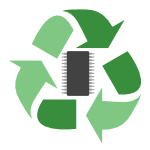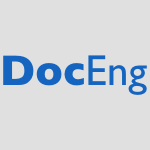258 papers:
 DAC-2015-KonukMMRSTZ #design
DAC-2015-KonukMMRSTZ #design- Design for low test pattern counts (HK, EKM, NM, JR, DS, JT, JZ), p. 6.
 PODS-2015-BeameBGS #first-order #symmetry
PODS-2015-BeameBGS #first-order #symmetry- Symmetric Weighted First-Order Model Counting (PB, GVdB, EG, DS), pp. 313–328.
 FoSSaCS-2015-HabermehlK #on the #quantifier
FoSSaCS-2015-HabermehlK #on the #quantifier- On Presburger Arithmetic Extended with Modulo Counting Quantifiers (PH, DK), pp. 375–389.
 TACAS-2015-ChistikovDM #approximate #estimation #probability #smt #source code
TACAS-2015-ChistikovDM #approximate #estimation #probability #smt #source code- Approximate Counting in SMT and Value Estimation for Probabilistic Programs (DVC, RD, RM), pp. 320–334.
 ICALP-v1-2015-0001GR #graph #morphism
ICALP-v1-2015-0001GR #graph #morphism- Counting Homomorphisms to Square-Free Graphs, Modulo 2 (AG, LAG, DR), pp. 642–653.
 ICALP-v1-2015-Curticapean #complexity #framework
ICALP-v1-2015-Curticapean #complexity #framework- Block Interpolation: A Framework for Tight Exponential-Time Counting Complexity (RC), pp. 380–392.
 ICALP-v1-2015-GalanisGJ #approximate
ICALP-v1-2015-GalanisGJ #approximate- Approximately Counting H-Colourings is BIS-Hard (AG, LAG, MJ), pp. 529–541.
 ICALP-v1-2015-GaspersS #algorithm #performance #set
ICALP-v1-2015-GaspersS #algorithm #performance #set- Separate, Measure and Conquer: Faster Polynomial-Space Algorithms for Max 2-CSP and Counting Dominating Sets (SG, GBS), pp. 567–579.
 ICALP-v1-2015-GoldbergGL #approximate
ICALP-v1-2015-GoldbergGL #approximate- Approximately Counting Locally-Optimal Structures (LAG, RG, JL), pp. 654–665.
 ICML-2015-HockingRB #detection #learning #named #segmentation
ICML-2015-HockingRB #detection #learning #named #segmentation- PeakSeg: constrained optimal segmentation and supervised penalty learning for peak detection in count data (TH, GR, GB), pp. 324–332.
 KDD-2015-LimK #graph #named
KDD-2015-LimK #graph #named- MASCOT: Memory-efficient and Accurate Sampling for Counting Local Triangles in Graph Streams (YL, UK), pp. 685–694.
 KDD-2015-ScheinPBW #multi
KDD-2015-ScheinPBW #multi- Bayesian Poisson Tensor Factorization for Inferring Multilateral Relations from Sparse Dyadic Event Counts (AS, JWP, DMB, HMW), pp. 1045–1054.
 KDD-2015-WangCMBYR #predict
KDD-2015-WangCMBYR #predict- Dynamic Poisson Autoregression for Influenza-Like-Illness Case Count Prediction (ZW, PC, SRM, JSB, JY, NR), pp. 1285–1294.
 ICSE-v1-2015-RegisDDA #logic #specification
ICSE-v1-2015-RegisDDA #logic #specification- Specifying Event-Based Systems with a Counting Fluent Temporal Logic (GR, RD, ND, NA), pp. 733–743.
 SOSP-2015-CurtsingerB #named #profiling
SOSP-2015-CurtsingerB #named #profiling- Coz: finding code that counts with causal profiling (CC, EDB), pp. 184–197.
 CAV-2015-AydinBB #constraints #string
CAV-2015-AydinBB #constraints #string- Automata-Based Model Counting for String Constraints (AA, LB, TB), pp. 255–272.
 CSL-2015-Charatonik0 #linear #logic #order
CSL-2015-Charatonik0 #linear #logic #order- Two-variable Logic with Counting and a Linear Order (WC, PW), pp. 631–647.
 LICS-2015-KrebsV #bound #logic #refinement
LICS-2015-KrebsV #bound #logic #refinement- Universal Covers, Color Refinement, and Two-Variable Counting Logic: Lower Bounds for the Depth (AK, OV), pp. 689–700.
 SAT-2015-AzizCMS
SAT-2015-AzizCMS- #∃SAT: Projected Model Counting (RAA, GC, CJM, PJS), pp. 121–137.
 VMCAI-2015-GanjeiREP #process
VMCAI-2015-GanjeiREP #process- Abstracting and Counting Synchronizing Processes (ZG, AR, PE, ZP), pp. 227–244.
 DATE-2014-DinhYH #design #logic
DATE-2014-DinhYH #design #logic- A logic integrated optimal pin-count design for digital microfluidic biochips (TAD, SY, TYH), pp. 1–6.
 PODS-2014-GrecoS #hybrid #query
PODS-2014-GrecoS #hybrid #query- Counting solutions to conjunctive queries: structural and hybrid tractability (GG, FS), pp. 132–143.
 STOC-2014-DeS #approximate #performance #polynomial
STOC-2014-DeS #approximate #performance #polynomial- Efficient deterministic approximate counting for low-degree polynomial threshold functions (AD, RAS), pp. 832–841.
 STOC-2014-SinghV #optimisation
STOC-2014-SinghV #optimisation- Entropy, optimization and counting (MS, NKV), pp. 50–59.
 CIAA-2014-AmorimMR #canonical #finite #linear #transducer #using
CIAA-2014-AmorimMR #canonical #finite #linear #transducer #using- Counting Equivalent Linear Finite Transducers Using a Canonical Form (IA, AM, RR), pp. 70–83.
 LATA-2014-FinkbeinerT #linear #logic #modelling
LATA-2014-FinkbeinerT #linear #logic #modelling- Counting Models of Linear-Time Temporal Logic (BF, HT), pp. 360–371.
 CHI-2014-MorrisSGK #named #smarttech #using
CHI-2014-MorrisSGK #named #smarttech #using- RecoFit: using a wearable sensor to find, recognize, and count repetitive exercises (DM, TSS, AG, IK), pp. 3225–3234.
 ICML-c2-2014-Chapados #effectiveness #modelling
ICML-c2-2014-Chapados #effectiveness #modelling- Effective Bayesian Modeling of Groups of Related Count Time Series (NC), pp. 1395–1403.
 ICPR-2014-ChenK14a #learning
ICPR-2014-ChenK14a #learning- Learning to Count with Back-propagated Information (KC, JKK), pp. 4672–4677.
 ICPR-2014-DamoulasHBGA #kernel #string
ICPR-2014-DamoulasHBGA #kernel #string- String Kernels for Complex Time-Series: Counting Targets from Sensed Movement (TD, JH, RB, CPG, AA), pp. 4429–4434.
 ICPR-2014-PerinaKB #array #classification #kernel #using
ICPR-2014-PerinaKB #array #classification #kernel #using- Expression Microarray Data Classification Using Counting Grids and Fisher Kernel (AP, MK, MB), pp. 1770–1775.
 KDD-2014-Ting #approximate
KDD-2014-Ting #approximate- Streamed approximate counting of distinct elements: beating optimal batch methods (DT), pp. 442–451.
 KR-2014-BroeckMD #first-order
KR-2014-BroeckMD #first-order- Skolemization for Weighted First-Order Model Counting (GVdB, WM, AD).
 ECOOP-2014-LiT #analysis #fault #python #source code
ECOOP-2014-LiT #analysis #fault #python #source code- Finding Reference-Counting Errors in Python/C Programs with Affine Analysis (SL, GT), pp. 80–104.
 POPL-2014-FarzanKP #proving
POPL-2014-FarzanKP #proving- Proofs that count (AF, ZK, AP), pp. 151–164.
 IJCAR-2014-KoopmannS
IJCAR-2014-KoopmannS- Count and Forget: Uniform Interpolation of 𝒮ℋ𝒬-Ontologies (PK, RAS), pp. 434–448.
 LICS-CSL-2014-FredriksonJ #approach #privacy #satisfiability
LICS-CSL-2014-FredriksonJ #approach #privacy #satisfiability- Satisfiability modulo counting: a new approach for analyzing privacy properties (MF, SJ), p. 10.
 LICS-CSL-2014-Pratt-Hartmann #equivalence #logic
LICS-CSL-2014-Pratt-Hartmann #equivalence #logic- Logics with counting and equivalence (IPH), p. 10.
 SAT-2014-CapelliDM
SAT-2014-CapelliDM- Hypergraph Acyclicity and Propositional Model Counting (FC, AD, SM), pp. 399–414.
 VLDB-2013-PavanTTW #graph
VLDB-2013-PavanTTW #graph- Counting and Sampling Triangles from a Graph Stream (AP, KT, ST, KLW), pp. 1870–1881.
 STOC-2013-Ullman #difference #privacy #query
STOC-2013-Ullman #difference #privacy #query- Answering n{2+o(1)} counting queries with differential privacy is hard (JU), pp. 361–370.
 ICALP-v1-2013-BravermanOV #how #question #streaming
ICALP-v1-2013-BravermanOV #how #question #streaming- How Hard Is Counting Triangles in the Streaming Model? (VB, RO, DV), pp. 244–254.
 ICALP-v1-2013-Curticapean
ICALP-v1-2013-Curticapean- Counting Matchings of Size k Is W[1]-Hard (RC), pp. 352–363.
 LATA-2013-Cai #complexity #problem
LATA-2013-Cai #complexity #problem- Complexity Dichotomy for Counting Problems (JYC), pp. 1–11.
 LATA-2013-MerweFG #difference #symmetry
LATA-2013-MerweFG #difference #symmetry- Counting Minimal Symmetric Difference NFAs (BvdM, MF, JG), pp. 419–430.
 GCM-J-2012-Radke #graph #higher-order #monad
GCM-J-2012-Radke #graph #higher-order #monad- HR* Graph Conditions Between Counting Monadic Second-Order and Second-Order Graph Formulas (HR).
 CIKM-2013-ArifuzzamanKM #algorithm #named #network #parallel
CIKM-2013-ArifuzzamanKM #algorithm #named #network #parallel- PATRIC: a parallel algorithm for counting triangles in massive networks (SA, MK, MVM), pp. 529–538.
 CIKM-2013-ParkC #algorithm #graph #performance #pipes and filters #scalability
CIKM-2013-ParkC #algorithm #graph #performance #pipes and filters #scalability- An efficient MapReduce algorithm for counting triangles in a very large graph (HMP, CWC), pp. 539–548.
 CIKM-2013-TangwongsanPT #graph #parallel #streaming
CIKM-2013-TangwongsanPT #graph #parallel #streaming- Parallel triangle counting in massive streaming graphs (KT, AP, ST), pp. 781–786.
 KDD-2013-JhaSP #algorithm #performance #streaming #using
KDD-2013-JhaSP #algorithm #performance #streaming #using- A space efficient streaming algorithm for triangle counting using the birthday paradox (MJ, CS, AP), pp. 589–597.
 KDIR-KMIS-2013-DimasKV #approach #sentiment #twitter
KDIR-KMIS-2013-DimasKV #approach #sentiment #twitter- Every Character Counts — A Character based Approach to Determine Political Sentiment on Twitter (AD, PCK, EMV), pp. 261–266.
 OOPSLA-2013-ShahriyarBYM
OOPSLA-2013-ShahriyarBYM- Taking off the gloves with reference counting Immix (RS, SMB, XY, KSM), pp. 93–110.
 ICSE-2013-PotaninDN #alias #cost analysis
ICSE-2013-PotaninDN #alias #cost analysis- Are your incoming aliases really necessary? counting the cost of object ownership (AP, MD, JN), pp. 742–751.
 PPoPP-2013-WamhoffFFRM #concurrent #memory management #named #performance #thread #transaction
PPoPP-2013-WamhoffFFRM #concurrent #memory management #named #performance #thread #transaction- FastLane: improving performance of software transactional memory for low thread counts (JTW, CF, PF, ER, GM), pp. 113–122.
 CADE-2013-BeckertGS #algorithm #logic
CADE-2013-BeckertGS #algorithm #logic- Analysing Vote Counting Algorithms via Logic — And Its Application to the CADE Election Scheme (BB, RG, CS), pp. 135–144.
 CSL-2013-BulatovDT #approximate #complexity
CSL-2013-BulatovDT #approximate #complexity- Descriptive complexity of approximate counting CSPs (AAB, VD, MT), pp. 149–164.
 CSL-2013-HampsonK #first-order #linear #logic
CSL-2013-HampsonK #first-order #linear #logic- One-variable first-order linear temporal logics with counting (CH, AK), pp. 348–362.
 CSL-2013-HarwathS #first-order #invariant #locality #logic #on the #quantifier
CSL-2013-HarwathS #first-order #invariant #locality #logic #on the #quantifier- On the locality of arb-invariant first-order logic with modulo counting quantifiers (FH, NS), pp. 363–379.
 LICS-2013-AndersonDH #fixpoint #linear #logic #programming
LICS-2013-AndersonDH #fixpoint #linear #logic #programming- Maximum Matching and Linear Programming in Fixed-Point Logic with Counting (MA, AD, BH), pp. 173–182.
 LICS-2013-CharatonikW #logic
LICS-2013-CharatonikW #logic- Two-Variable Logic with Counting and Trees (WC, PW), pp. 73–82.
 RTA-2013-TushkanovaRGK #automation #calculus #decidability
RTA-2013-TushkanovaRGK #automation #calculus #decidability- Automatic Decidability: A Schematic Calculus for Theories with Counting Operators (ET, CR, AG, OK), pp. 303–318.
 DATE-2012-RichterC #manycore #reduction
DATE-2012-RichterC #manycore #reduction- Test pin count reduction for NoC-based Test delivery in multicore SOCs (MR, KC), pp. 787–792.
 PODS-2012-HuangYZ #algorithm #distributed #random
PODS-2012-HuangYZ #algorithm #distributed #random- Randomized algorithms for tracking distributed count, frequencies, and ranks (ZH, KY, QZ), pp. 295–306.
 PODS-2012-LiuRV #distributed
PODS-2012-LiuRV #distributed- Continuous distributed counting for non-monotonic streams (ZL, BR, MV), pp. 307–318.
 SIGMOD-2012-GanFFN
SIGMOD-2012-GanFFN- Locality-sensitive hashing scheme based on dynamic collision counting (JG, JF, QF, WN), pp. 541–552.
 VLDB-2012-MankuM #approximate #data type
VLDB-2012-MankuM #approximate #data type- Approximate Frequency Counts over Data Streams (GSM, RM), p. 1699.
 VLDB-2013-0002KMMO12
VLDB-2013-0002KMMO12- Counting with the Crowd (AM, DRK, SM, RM, SO), pp. 109–120.
 STOC-2012-CaiC #complexity #csp
STOC-2012-CaiC #complexity #csp- Complexity of counting CSP with complex weights (JYC, XC), pp. 909–920.
 STOC-2012-Larsen #complexity
STOC-2012-Larsen #complexity- The cell probe complexity of dynamic range counting (KGL), pp. 85–94.
 STOC-2012-MuthukrishnanN
STOC-2012-MuthukrishnanN- Optimal private halfspace counting via discrepancy (SM, AN), pp. 1285–1292.
 DLT-2012-ChenL #regular expression
DLT-2012-ChenL #regular expression- Checking Determinism of Regular Expressions with Counting (HC, PL), pp. 332–343.
 DLT-2012-KutribMW #automaton #finite #multi
DLT-2012-KutribMW #automaton #finite #multi- States and Heads Do Count for Unary Multi-head Finite Automata (MK, AM, MW), pp. 214–225.
 ICALP-v2-2012-KaneMSS #data type
ICALP-v2-2012-KaneMSS #data type- Counting Arbitrary Subgraphs in Data Streams (DMK, KM, TS, HS), pp. 598–609.
 CHI-2012-PedroS #exclamation #social
CHI-2012-PedroS #exclamation #social- Your opinion counts!: leveraging social comments for analyzing aesthetic perception of photographs (JSP, PS), pp. 2519–2522.
 CIKM-2012-RahmanBH #algorithm #analysis #approximate #graph #named #scalability
CIKM-2012-RahmanBH #algorithm #analysis #approximate #graph #named #scalability- GRAFT: an approximate graphlet counting algorithm for large graph analysis (MR, MB, MAH), pp. 1467–1471.
 ICPR-2012-FiaschiKNH #learning
ICPR-2012-FiaschiKNH #learning- Learning to count with regression forest and structured labels (LF, UK, RN, FAH), pp. 2685–2688.
 ICPR-2012-GuptaPV #parametricity
ICPR-2012-GuptaPV #parametricity- A nonparametric Bayesian Poisson gamma model for count data (SKG, DQP, SV), pp. 1815–1818.
 ICPR-2012-LiHL #adaptation #learning #multi #online #people
ICPR-2012-LiHL #adaptation #learning #multi #online #people- Online adaptive learning for multi-camera people counting (JL, LH, CL), pp. 3415–3418.
 ICPR-2012-LinL #bottom-up #process #top-down
ICPR-2012-LinL #bottom-up #process #top-down- Integrating bottom-up and top-down processes for accurate pedestrian counting (YL, NL), pp. 2508–2511.
 KDD-2012-GionisLT #set
KDD-2012-GionisLT #set- Estimating entity importance via counting set covers (AG, TL, ET), pp. 687–695.
 KDD-2012-RoyTA #hardware #manycore #performance
KDD-2012-RoyTA #hardware #manycore #performance- Efficient frequent item counting in multi-core hardware (PR, JT, GA), pp. 1451–1459.
 HPCA-2012-BattleHHR #flexibility #using
HPCA-2012-BattleHHR #flexibility #using- Flexible register management using reference counting (SJB, ADH, MH, AR), pp. 273–284.
 ISMM-2012-ShahriyarBF
ISMM-2012-ShahriyarBF- Down for the count? Getting reference counting back in the ring (RS, SMB, DF), pp. 73–84.
 CSL-2012-KaiserL #logic
CSL-2012-KaiserL #logic- A Counting Logic for Structure Transition Systems (LK, SL), pp. 366–380.
 DATE-2011-LoCWT #modelling #performance #simulation
DATE-2011-LoCWT #modelling #performance #simulation- Cycle-count-accurate processor modeling for fast and accurate system-level simulation (CKL, LCC, MHW, RST), pp. 341–346.
 ICDAR-2011-SmithGSL #evaluation
ICDAR-2011-SmithGSL #evaluation- Evaluation of Voting with Form Dropout Techniques for Ballot Vote Counting (EHBS, SG, RS, DPL), pp. 473–477.
 SCAM-2011-Black #debugging
SCAM-2011-Black #debugging- Counting Bugs is Harder Than You Think (PEB), pp. 1–9.
 WCRE-2011-HerraizSNH #case study #quality
WCRE-2011-HerraizSNH #case study #quality- Impact of Installation Counts on Perceived Quality: A Case Study on Debian (IH, ES, THDN, AEH), pp. 219–228.
 DLT-2011-BattagliaGS #multi #order
DLT-2011-BattagliaGS #multi #order- Counting the Orderings for Multisets in Consecutive Ones Property and PQ-Trees (GB, RG, NS), pp. 58–69.
 CHI-2011-HillDAGM #experience #eye tracking #web
CHI-2011-HillDAGM #experience #eye tracking #web- Older web users’ eye movements: experience counts (RLH, AD, JLA, PG, LM), pp. 1151–1160.
 CIKM-2011-YanTLSL #learning #predict
CIKM-2011-YanTLSL #learning #predict- Citation count prediction: learning to estimate future citations for literature (RY, JT, XL, DS, XL), pp. 1247–1252.
 ECIR-2011-SeoCKL
ECIR-2011-SeoCKL- Smoothing Click Counts for Aggregated Vertical Search (JS, WBC, KHK, JHL), pp. 387–398.
 RecSys-2011-PraweshP #recommendation
RecSys-2011-PraweshP #recommendation- The “top N” news recommender: count distortion and manipulation resistance (SP, BP), pp. 237–244.
 SIGIR-2011-CetintasCSSD #modelling #online #probability
SIGIR-2011-CetintasCSSD #modelling #online #probability- Forecasting counts of user visits for online display advertising with probabilistic latent class models (SC, DC, LS, BS, ZD), pp. 1217–1218.
 SIGIR-2011-ZhangMLM #approach #how #information retrieval #ranking
SIGIR-2011-ZhangMLM #approach #how #information retrieval #ranking- How to count thumb-ups and thumb-downs?: an information retrieval approach to user-rating based ranking of items (DZ, RM, HL, JM), pp. 1223–1224.
 ECOOP-2011-Bergel #execution #smalltalk
ECOOP-2011-Bergel #execution #smalltalk- Counting Messages as a Proxy for Average Execution Time in Pharo (AB), pp. 533–557.
 ICTSS-2011-Gaudel #random testing #testing
ICTSS-2011-Gaudel #random testing #testing- Counting for Random Testing (MCG), pp. 1–8.
 SAT-2011-BennettS #principle #using
SAT-2011-BennettS #principle #using- Model Counting Using the Inclusion-Exclusion Principle (HB, SS), pp. 362–363.
 DATE-2010-HuangCLH #robust
DATE-2010-HuangCLH #robust- A robust ADC code hit counting technique (JLH, KYC, MHL, XLH), pp. 1749–1754.
 PODS-2010-LiHRMM #difference #linear #optimisation #privacy #query
PODS-2010-LiHRMM #difference #linear #optimisation #privacy #query- Optimizing linear counting queries under differential privacy (CL, MH, VR, GM, AM), pp. 123–134.
 FoSSaCS-2010-LaroussinieMP
FoSSaCS-2010-LaroussinieMP- Counting CTL (FL, AM, EP), pp. 206–220.
 ICALP-v2-2010-ChambartS #problem
ICALP-v2-2010-ChambartS #problem- Pumping and Counting on the Regular Post Embedding Problem (PC, PS), pp. 64–75.
 LATA-2010-ManeaT #problem #word
LATA-2010-ManeaT #problem #word- Hard Counting Problems for Partial Words (FM, CT), pp. 426–438.
 ICFP-2010-VytiniotisK #functional
ICFP-2010-VytiniotisK #functional- Functional pearl: every bit counts (DV, AJK), pp. 15–26.
 IFL-2010-HerhutJSPG #case study #concurrent #experience
IFL-2010-HerhutJSPG #case study #concurrent #experience- Concurrent Non-deferred Reference Counting on the Microgrid: First Experiences (SH, CJ, SBS, RP, CG), pp. 185–202.
 CHI-2010-BaillyLG #linear #multi
CHI-2010-BaillyLG #linear #multi- Finger-count & radial-stroke shortcuts: 2 techniques for augmenting linear menus on multi-touch surfaces (GB, EL, YG), pp. 591–594.
 ICML-2010-BartlettPW #constant #memory management #process
ICML-2010-BartlettPW #constant #memory management #process- Forgetting Counts: Constant Memory Inference for a Dependent Hierarchical Pitman-Yor Process (NB, DP, FW), pp. 63–70.
 ICPR-2010-BecharMTB #online #recognition #video
ICPR-2010-BecharMTB #online #recognition #video- On-Line Video Recognition and Counting of Harmful Insects (IB, SM, MT, FB), pp. 4068–4071.
 ICPR-2010-ConteFPTV #detection #people
ICPR-2010-ConteFPTV #detection #people- Counting Moving People in Videos by Salient Points Detection (DC, PF, GP, FT, MV), pp. 1743–1746.
 ICPR-2010-TamersoyA
ICPR-2010-TamersoyA- Counting Vehicles in Highway Surveillance Videos (BT, JKA), pp. 3631–3635.
 ICPR-2010-ZengM #detection #multi #people #robust
ICPR-2010-ZengM #detection #multi #people #robust- Robust Head-Shoulder Detection by PCA-Based Multilevel HOG-LBP Detector for People Counting (CZ, HM), pp. 2069–2072.
 DAC-2009-LinC #design
DAC-2009-LinC #design- ILP-based pin-count aware design methodology for microfluidic biochips (CCYL, YWC), pp. 258–263.
 DATE-2009-PatelPR #architecture #framework #named #security
DATE-2009-PatelPR #architecture #framework #named #security- CUFFS: An instruction count based architectural framework for security of MPSoCs (KP, SP, RGR), pp. 779–784.
 DocEng-2009-BarcenasGL #analysis #constraints #on the #query
DocEng-2009-BarcenasGL #analysis #constraints #on the #query- On the analysis of queries with counting constraints (EB, PG, NL), pp. 21–24.
 VLDB-2009-DasAAA #architecture #concurrent #data type #manycore #thread
VLDB-2009-DasAAA #architecture #concurrent #data type #manycore #thread- Thread Cooperation in Multicore Architectures for Frequency Counting over Multiple Data Streams (SD, SA, DA, AEA), pp. 217–228.
 VLDB-2009-KaushikS #consistency
VLDB-2009-KaushikS #consistency- Consistent Histograms In The Presence of Distinct Value Counts (RK, DS), pp. 850–861.
 TACAS-2009-EmmiJKM #implementation #verification
TACAS-2009-EmmiJKM #implementation #verification- Verifying Reference Counting Implementations (ME, RJ, EK, RM), pp. 352–367.
 STOC-2009-CaiLX #csp #problem
STOC-2009-CaiLX #csp #problem- Holant problems and counting CSP (JyC, PL, MX), pp. 715–724.
 STOC-2009-VassilevskaW
STOC-2009-VassilevskaW- Finding, minimizing, and counting weighted subgraphs (VV, RW), pp. 455–464.
 ICALP-v1-2009-AminiFS #morphism
ICALP-v1-2009-AminiFS #morphism- Counting Subgraphs via Homomorphisms (OA, FVF, SS), pp. 71–82.
 LATA-2009-IIBT #array
LATA-2009-IIBT #array- Counting Parameterized Border Arrays for a Binary Alphabet (TI, SI, HB, MT), pp. 422–433.
 ECIR-2009-KleinN #correlation #documentation #n-gram
ECIR-2009-KleinN #correlation #documentation #n-gram- Correlation of Term Count and Document Frequency for Google N-Grams (MK, MLN), pp. 620–627.
 KDD-2009-TsourakakisKMF #graph #named
KDD-2009-TsourakakisKMF #graph #named- DOULION: counting triangles in massive graphs with a coin (CET, UK, GLM, CF), pp. 837–846.
 SIGIR-2009-WangD
SIGIR-2009-WangD- Counting ancestors to estimate authority (JW, BDD), pp. 658–659.
 DATE-2008-MeisterLT #algorithm #component #novel
DATE-2008-MeisterLT #algorithm #component #novel- Novel Pin Assignment Algorithms for Components with Very High Pin Counts (TM, JL, GT), pp. 837–842.
 DATE-2008-YoshidaF
DATE-2008-YoshidaF- Performance-Constrained Different Cell Count Minimization for Continuously-Sized Circuits (HY, MF), pp. 1099–1102.
 AFL-2008-Bercoff #product line
AFL-2008-Bercoff #product line- Counting of a family of column-convex rectilinear tiles (CB), pp. 100–110.
 AFL-2008-Blanchet-SadriMS #word
AFL-2008-Blanchet-SadriMS #word- Counting Distinct Squares in Partial Words (FBS, RM, GS), pp. 122–133.
 ICALP-A-2008-Bulatov #complexity #constraints #problem
ICALP-A-2008-Bulatov #complexity #constraints #problem- The Complexity of the Counting Constraint Satisfaction Problem (AAB), pp. 646–661.
 LATA-2008-KitaevMS #morphism #order #word
LATA-2008-KitaevMS #morphism #order #word- Counting Ordered Patterns in Words Generated by Morphisms (SK, TM, PS), pp. 287–298.
 LATA-2008-Steinberg #matrix #sequence #theorem
LATA-2008-Steinberg #matrix #sequence #theorem- Subsequence Counting, Matrix Representations and a Theorem of Eilenberg (BS), pp. 6–10.
 CIKM-2008-GhelliCS #linear #regular expression
CIKM-2008-GhelliCS #linear #regular expression- Linear time membership in a class of regular expressions with interleaving and counting (GG, DC, CS), pp. 389–398.
 ICPR-2008-HanburyS #evaluation #metric #on the #segmentation
ICPR-2008-HanburyS #evaluation #metric #on the #segmentation- On segmentation evaluation metrics and region counts (AH, JS), pp. 1–4.
 ICPR-2008-MartinezFRS #3d
ICPR-2008-MartinezFRS #3d- Three-dimensional cell counting for in-situ microscopy (GM, JGF, GR, TS), pp. 1–4.
 KDD-2008-BecchettiBCG #algorithm #graph #performance
KDD-2008-BecchettiBCG #algorithm #graph #performance- Efficient semi-streaming algorithms for local triangle counting in massive graphs (LB, PB, CC, AG), pp. 16–24.
 SAC-2008-SarmentaDRD
SAC-2008-SarmentaDRD- Offline count-limited certificates (LFGS, MvD, JR, SD), pp. 2145–2152.
 ISMM-2008-Trancon-y-Widemann #functional #garbage collection #programming
ISMM-2008-Trancon-y-Widemann #functional #garbage collection #programming- A reference-counting garbage collection algorithmfor cyclical functional programming (BTyW), pp. 71–80.
 CSL-2008-KotekMZ #on the
CSL-2008-KotekMZ #on the- On Counting Generalized Colorings (TK, JAM, BZ), pp. 339–353.
 ISSTA-2008-BalzarottiBCFKRVV #security #testing
ISSTA-2008-BalzarottiBCFKRVV #security #testing- Are your votes really counted?: testing the security of real-world electronic voting systems (DB, GB, MC, VF, RAK, WKR, FV, GV), pp. 237–248.
 STOC-2007-BayatiGKNT #algorithm #approximate
STOC-2007-BayatiGKNT #algorithm #approximate- Simple deterministic approximation algorithms for counting matchings (MB, DG, DAK, CN, PT), pp. 122–127.
 STOC-2007-Patrascu #2d #bound
STOC-2007-Patrascu #2d #bound- Lower bounds for 2-dimensional range counting (MP), pp. 40–46.
 ICALP-2007-AtseriasBD07a #equation #logic
ICALP-2007-AtseriasBD07a #equation #logic- Affine Systems of Equations and Counting Infinitary Logic (AA, AAB, AD), pp. 558–570.
 CC-2007-PazP #garbage collection #using
CC-2007-PazP #garbage collection #using- Using Prefetching to Improve Reference-Counting Garbage Collectors (HP, EP), pp. 48–63.
 ISMM-2007-Joisha #framework #garbage collection #performance
ISMM-2007-Joisha #framework #garbage collection #performance- Overlooking roots: a framework for making nondeferred reference-counting garbage collection fast (PGJ), pp. 141–158.
 CSL-2007-DawarR #finite #logic #power of #strict
CSL-2007-DawarR #finite #logic #power of #strict- The Power of Counting Logics on Restricted Classes of Finite Structures (AD, DR), pp. 84–98.
 SAT-2007-GomesHSS #theory and practice
SAT-2007-GomesHSS #theory and practice- Short XORs for Model Counting: From Theory to Practice (CPG, JH, AS, BS), pp. 100–106.
 DATE-2006-PanditKMP #hardware #higher-order #synthesis
DATE-2006-PanditKMP #hardware #higher-order #synthesis- High level synthesis of higher order continuous time state variable filters with minimum sensitivity and hardware count (SP, SK, CAM, AP), pp. 1203–1204.
 PODS-2006-BuriolFLMS #data type
PODS-2006-BuriolFLMS #data type- Counting triangles in data streams (LSB, GF, SL, AMS, CS), pp. 253–262.
 SIGMOD-2006-KeralapuraCR #distributed #monitoring
SIGMOD-2006-KeralapuraCR #distributed #monitoring- Communication-efficient distributed monitoring of thresholded counts (RK, GC, JR), pp. 289–300.
 FoSSaCS-2006-KuskeL #first-order
FoSSaCS-2006-KuskeL #first-order- First-Order and Counting Theories of ω-Automatic Structures (DK, ML), pp. 322–336.
 STOC-2006-Weitz #independence #set
STOC-2006-Weitz #independence #set- Counting independent sets up to the tree threshold (DW), pp. 140–149.
 ICALP-v1-2006-BordewichDK #approximate #metric
ICALP-v1-2006-BordewichDK #approximate #metric- Stopping Times, Metrics and Approximate Counting (MB, MED, MK), pp. 108–119.
 ICALP-v1-2006-DyerGP #graph #morphism #on the
ICALP-v1-2006-DyerGP #graph #morphism #on the- On Counting Homomorphisms to Directed Acyclic Graphs (MED, LAG, MP), pp. 38–49.
 ICFP-2006-MightS #analysis #garbage collection
ICFP-2006-MightS #analysis #garbage collection- Improving flow analyses via ΓCFA: abstract garbage collection and counting (MM, OS), pp. 13–25.
 ICGT-2006-Lins #algorithm
ICGT-2006-Lins #algorithm- New Algorithms and Applications of Cyclic Reference Counting (RDL), pp. 15–29.
 AdaEurope-2006-BreuerP #fault #kernel #linux #source code #static analysis
AdaEurope-2006-BreuerP #fault #kernel #linux #source code #static analysis- One Million (LOC) and Counting: Static Analysis for Errors and Vulnerabilities in the Linux Kernel Source Code (PTB, SP), pp. 56–70.
 ICPR-v3-2006-KongGT #approach #invariant
ICPR-v3-2006-KongGT #approach #invariant- A Viewpoint Invariant Approach for Crowd Counting (DK, DG, HT), pp. 1187–1190.
 QAPL-2005-BinderH06 #bytecode #cpu #metric #using
QAPL-2005-BinderH06 #bytecode #cpu #metric #using- Using Bytecode Instruction Counting as Portable CPU Consumption Metric (WB, JH), pp. 57–77.
 QAPL-2006-BinderH06a #bytecode #profiling #using #virtual machine
QAPL-2006-BinderH06a #bytecode #profiling #using #virtual machine- Exact and Portable Profiling for the JVM Using Bytecode Instruction Counting (WB, JH), pp. 45–64.
 ISMM-2006-Joisha #compilation #garbage collection #optimisation
ISMM-2006-Joisha #compilation #garbage collection #optimisation- Compiler optimizations for nondeferred reference-counting garbage collection (PGJ), pp. 150–161.
 SAT-2006-MorgadoMMM #integer #modelling
SAT-2006-MorgadoMMM #integer #modelling- Counting Models in Integer Domains (AM, PJM, VMM, JPMS), pp. 410–423.
 SAT-2006-Thurley #component #modelling #named
SAT-2006-Thurley #component #modelling #named- sharpSAT — Counting Models with Advanced Component Caching and Implicit BCP (MT), pp. 424–429.
 DAC-2005-GoplenSS
DAC-2005-GoplenSS- Net weighting to reduce repeater counts during placement (BG, PS, SSS), pp. 503–508.
 STOC-2005-CryanDR #approximate #bound
STOC-2005-CryanDR #approximate #bound- Approximately counting integral flows and cell-bounded contingency tables (MC, MED, DR), pp. 413–422.
 ICALP-2005-HanedaKT
ICALP-2005-HanedaKT- Suitable Curves for Genus-4 HCC over Prime Fields: Point Counting Formulae for Hyperelliptic Curves of Type y2=x2k+1+ax (MH, MK, TT), pp. 539–550.
 SEFM-2005-WandelerJLT #automaton #interface #modelling #static analysis
SEFM-2005-WandelerJLT #automaton #interface #modelling #static analysis- Counting Interface Automata and their Application in Static Analysis of Actor Models (EW, JWJ, EAL, LT), pp. 106–116.
 IFL-2005-HopeH
IFL-2005-HopeH- Accurate Step Counting (CH, GH), pp. 91–105.
 SAT-2005-SangBK #heuristic #performance
SAT-2005-SangBK #heuristic #performance- Heuristics for Fast Exact Model Counting (TS, PB, HAK), pp. 226–240.
 SAT-2005-WeiS #approach
SAT-2005-WeiS #approach- A New Approach to Model Counting (WW, BS), pp. 324–339.
 DATE-v2-2004-TehranipourNC #flexibility #testing
DATE-v2-2004-TehranipourNC #flexibility #testing- Nine-Coded Compression Technique with Application to Reduced Pin-Count Testing and Flexible On-Chip Decompression (MHT, MN, KC), pp. 1284–1289.
 PODS-2004-ArasuM #approximate
PODS-2004-ArasuM #approximate- Approximate Counts and Quantiles over Sliding Windows (AA, GSM), pp. 286–296.
 STOC-2004-BurgisserC #algebra #complexity #set
STOC-2004-BurgisserC #algebra #complexity #set- Counting complexity classes for numeric computations II: algebraic and semialgebraic sets (PB, FC), pp. 475–485.
 ICALP-2004-SeidlSMH #for free
ICALP-2004-SeidlSMH #for free- Counting in Trees for Free (HS, TS, AM, PH), pp. 1136–1149.
 ICML-2004-CortesM #kernel
ICML-2004-CortesM #kernel- Distribution kernels based on moments of counts (CC, MM).
 ICML-2004-TaoSVO #approximate #learning #multi
ICML-2004-TaoSVO #approximate #learning #multi- SVM-based generalized multiple-instance learning via approximate box counting (QT, SDS, NVV, TTO).
 ICPR-v3-2004-ChiuDS #embedded #realtime
ICPR-v3-2004-ChiuDS #embedded #realtime- An Embedded Real-time Vision System for 24-hour Indoor/Outdoor Car-Counting Applications (MYC, RD, TS), pp. 338–341.
 LOPSTR-2004-WellsY #graph #proving #synthesis
LOPSTR-2004-WellsY #graph #proving #synthesis- Graph-Based Proof Counting and Enumeration with Applications for Program Fragment Synthesis (JBW, BY), pp. 262–277.
 POPL-2004-Boehm #lazy evaluation
POPL-2004-Boehm #lazy evaluation- The space cost of lazy reference counting (HJB), pp. 210–219.
 POPL-2004-Dal-ZilioLM #logic
POPL-2004-Dal-ZilioLM #logic- A logic you can count on (SDZ, DL, CM), pp. 135–146.
 CC-2004-ParkerC #algorithm
CC-2004-ParkerC #algorithm- An Automata-Theoretic Algorithm for Counting Solutions to Presburger Formulas (EP, SC), pp. 104–119.
 SAT-2004-SangBBKP #component #effectiveness #learning
SAT-2004-SangBBKP #component #effectiveness #learning- Combining Component Caching and Clause Learning for Effective Model Counting (TS, FB, PB, HAK, TP), pp. 20–28.
 FoSSaCS-2003-Lugiez #automaton #constraints #multi #similarity
FoSSaCS-2003-Lugiez #automaton #constraints #multi #similarity- Counting and Equality Constraints for Multitree Automata (DL), pp. 328–342.
 STOC-2003-Dyer #approximate #programming
STOC-2003-Dyer #approximate #programming- Approximate counting by dynamic programming (MED), pp. 693–699.
 CIAA-2003-XieLD #complexity #equation #linear #problem #using
CIAA-2003-XieLD #complexity #equation #linear #problem #using- New Complexity Results for Some Linear Counting Problems Using Minimal Solutions to Linear Diophantine Equations (GX, CL, ZD), pp. 163–175.
 ICEIS-v2-2003-BailonDF #fuzzy
ICEIS-v2-2003-BailonDF #fuzzy- Extension of the Box-Counting Method to Measure the Fractal Dimension of Fuzzy Data (ABB, MD, WF), pp. 185–190.
 OOPSLA-2003-BlackburnM #garbage collection #performance
OOPSLA-2003-BlackburnM #garbage collection #performance- Ulterior reference counting: fast garbage collection without a long wait (SB, KSM), pp. 344–358.
 CC-2003-AzatchiP #garbage collection
CC-2003-AzatchiP #garbage collection- Integrating Generations with Advanced Reference Counting Garbage Collectors (HA, EP), pp. 185–199.
 DATE-2002-ChandraC #clustering #testing
DATE-2002-ChandraC #clustering #testing- Test Resource Partitioning and Reduced Pin-Count Testing Based on Test Data Compression (AC, KC), pp. 598–603.
 SIGMOD-2002-FreireHRRS #named #xml
SIGMOD-2002-FreireHRRS #named #xml- StatiX: making XML count (JF, JRH, MR, PR, JS), pp. 181–191.
 VLDB-2002-MankuM #approximate #data type
VLDB-2002-MankuM #approximate #data type- Approximate Frequency Counts over Data Streams (GSM, RM), pp. 346–357.
 STOC-2002-AjtaiJKS #approximate #data type
STOC-2002-AjtaiJKS #approximate #data type- Approximate counting of inversions in a data stream (MA, TSJ, RK, DS), pp. 370–379.
 STOC-2002-CryanD #algorithm #approximate #constant #polynomial
STOC-2002-CryanD #algorithm #approximate #constant #polynomial- A polynomial-time algorithm to approximately count contingency tables when the number of rows is constant (MC, MED), pp. 240–249.
 ICALP-2002-ImpagliazzoS #axiom #bound #simulation
ICALP-2002-ImpagliazzoS #axiom #bound #simulation- Bounded-Depth Frege Systems with Counting Axioms Polynomially Simulate Nullstellensatz Refutations (RI, NS), pp. 208–219.
 KDD-2002-WuF #performance #scalability
KDD-2002-WuF #performance #scalability- Making every bit count: fast nonlinear axis scaling (LW, CF), pp. 664–669.
 SIGIR-2002-Sormunen #documentation #question
SIGIR-2002-Sormunen #documentation #question- Liberal relevance criteria of TREC -: counting on negligible documents? (ES), pp. 324–330.
 SAC-2002-DingDP #classification #data type #using
SAC-2002-DingDP #classification #data type #using- Decision tree classification of spatial data streams using Peano Count Trees (QD, QD, WP), pp. 413–417.
 DAC-2001-SinghMM #latency
DAC-2001-SinghMM #latency- Latency and Latch Count Minimization in Wave Steered Circuits (AS, AM, MMS), pp. 383–388.
 HT-2001-ZhuHH #named #web
HT-2001-ZhuHH #named #web- PageRate: counting Web users’ votes (JZ, JH, JGH), pp. 131–132.
 CIAA-2001-BoigelotL #equation
CIAA-2001-BoigelotL #equation- Counting the Solutions of Presburger Equations without Enumerating Them (BB, LL), pp. 40–51.
 ECOOP-2001-BaconR #concurrent
ECOOP-2001-BaconR #concurrent- Concurrent Cycle Collection in Reference Counted Systems (DFB, VTR), pp. 207–235.
 OOPSLA-2001-LevanoniP #garbage collection #java #on the fly
OOPSLA-2001-LevanoniP #garbage collection #java #on the fly- An On-the-Fly Reference Counting Garbage Collector for Java (YL, EP), pp. 367–380.
 SIGMOD-2000-WaasG #cost analysis #execution #query
SIGMOD-2000-WaasG #cost analysis #execution #query- Counting, Enumerating, and Sampling of Execution Plans in a Cost-Based Query Optimizer (FW, CAGL), pp. 499–509.
 CHI-2000-NonneckeP
CHI-2000-NonneckeP- Lurker demographics: counting the silent (BN, JP), pp. 73–80.
 ICPR-v1-2000-AzuelaG #image
ICPR-v1-2000-AzuelaG #image- New Method to Count Objects into an Image (JHSA, GG), pp. 1470–1473.
 ICPR-v2-2000-Theera-UmponG #fault #network
ICPR-v2-2000-Theera-UmponG #fault #network- Training Neural Networks to Count White Blood Cells via a Minimum Counting Error Objective Function (NTU, PDG), pp. 2299–2302.
 ISMM-2000-Dickman
ISMM-2000-Dickman- Diffusion Tree Restructuring for Indirect Reference Counting (PD), pp. 167–177.
 ICALP-1999-AllenderABDL #bound
ICALP-1999-AllenderABDL #bound- Bounded Depth Arithmetic Circuits: Counting and Closure (EA, AA, DAMB, SD, HL), pp. 149–158.
 ICEIS-1999-ChangDI #estimation
ICEIS-1999-ChangDI #estimation- Objects Count for Software Estimation (EC, TSD, MI), p. 776.
 LICS-1999-Libkin #bound #invariant #logic #query
LICS-1999-Libkin #bound #invariant #logic #query- Logics with Counting, Auxiliary Relations, and Lower Bounds for Invariant Queries (LL), pp. 316–325.
 LICS-1999-Ruhl #transitive
LICS-1999-Ruhl #transitive- Counting and Addition Cannot Express Deterministic Transitive Closure (MR), pp. 326–334.
 TLCA-1999-BrodaD
TLCA-1999-BrodaD- Counting a Type’s Principal Inhabitants (SB, LD), pp. 69–82.
 STOC-1998-Huber #approximate
STOC-1998-Huber #approximate- Exact Sampling and Approximate Counting Techniques (MH), pp. 31–40.
 ICALP-1998-BrassardHT #quantum
ICALP-1998-BrassardHT #quantum- Quantum Counting (GB, PH, AT), pp. 820–831.
 CIKM-1998-Tang #incremental #performance #using
CIKM-1998-Tang #incremental #performance #using- Using Incremental Pruning to Increase the Efficiency of Dynamic Itemset Counting for Association Rules (JT), pp. 273–280.
 KDD-1998-AndersonM #learning #performance
KDD-1998-AndersonM #learning #performance- ADtrees for Fast Counting and for Fast Learning of Association Rules (BSA, AWM), pp. 134–138.
 ISMM-1998-Moreau #distributed
ISMM-1998-Moreau #distributed- Hierarchical Distributed Reference Counting (LM), pp. 57–67.
 ISMM-1998-RothW
ISMM-1998-RothW- One-Bit Counts between Unique and Sticky (DJR, DSW), pp. 49–56.
 LICS-1998-JohannsenP #on the #proving
LICS-1998-JohannsenP #on the #proving- On Proofs about Threshold Circuits and Counting Hierarchies (JJ, CP), pp. 444–452.
 LICS-1998-Libkin #logic #on the
LICS-1998-Libkin #logic #on the- On Counting Logics and Local Properties (LL), pp. 501–512.
 SIGMOD-1997-BrinMUT
SIGMOD-1997-BrinMUT- Dynamic Itemset Counting and Implication Rules for Market Basket Data (SB, RM, JDU, ST), pp. 255–264.
 VLDB-1997-AshwinRSSS #database #garbage collection #object-oriented #transaction #using
VLDB-1997-AshwinRSSS #database #garbage collection #object-oriented #transaction #using- Garbage Collection in Object Oriented Databases Using Transactional Cyclic Reference Counting (SA, PR, SS, AS, SS), pp. 366–375.
 STOC-1997-LubyV #approximate
STOC-1997-LubyV #approximate- Approximately Counting Up To Four (Extended Abstract) (ML, EV), pp. 682–687.
 ICALP-1997-EilamFZ #layout #network #problem
ICALP-1997-EilamFZ #layout #network #problem- A Complete Characterization of the Path Layout Construction Problem for ATM Networks with Given Hop Count and Load (Extended Abstract) (TE, MF, SZ), pp. 527–537.
 KDD-1997-KahngM #algorithm #mining
KDD-1997-KahngM #algorithm #mining- Mining Generalized Term Associations: Count Propagation Algorithm (JK, WHKL, DM), pp. 203–206.
 LICS-1997-GradelOR #decidability #logic
LICS-1997-GradelOR #decidability #logic- Two-Variable Logic with Counting is Decidable (EG, MO, ER), pp. 306–317.
 LICS-1997-PacholskiST #complexity #logic
LICS-1997-PacholskiST #complexity #logic- Complexity of Two-Variable Logic with Counting (LP, WS, LT), pp. 318–327.
 DAC-1996-BinhISH #algorithm #clustering #design #hardware #pipes and filters
DAC-1996-BinhISH #algorithm #clustering #design #hardware #pipes and filters- A Hardware/Software Partitioning Algorithm for Designing Pipelined ASIPs with Least Gate Counts (NNB, MI, AS, NH), pp. 527–532.
 ICPR-1996-FengLC #approach #estimation
ICPR-1996-FengLC #approach #estimation- Fractional box-counting approach to fractal dimension estimation (JF, WCL, CTC), pp. 854–858.
 LICS-1996-Nurmonen #finite #order #quantifier
LICS-1996-Nurmonen #finite #order #quantifier- Counting Modulo Quantifiers on Finite Linearly Ordered Trees (JN), pp. 484–493.
 DLT-1995-Holzer #automaton #finite #on the
DLT-1995-Holzer #automaton #finite #on the- On Emptiness and Counting for Alternating Finite Automata (MH), pp. 88–97.
 LICS-1995-Otto
LICS-1995-Otto- Ptime Canonization for Two Variables with Counting (MO), pp. 342–352.
 PLDI-1994-Pugh #how #why
PLDI-1994-Pugh #how #why- Counting Solutions to Presburger Formulas: How and Why (WP), pp. 121–134.
 PLILP-1994-Schulte #garbage collection
PLILP-1994-Schulte #garbage collection- Deriving Residual Reference Count Garbage Collectors (WS), pp. 102–116.
 SAC-1994-DAntoneVGM #detection #fuzzy #parallel
SAC-1994-DAntoneVGM #detection #fuzzy #parallel- A fuzzy system to detect and count parallel noised tracks (ID, CV, EG, MM), pp. 166–169.
 CADE-1994-HermannK #complexity #equation #problem
CADE-1994-HermannK #complexity #equation #problem- The Complexity of Counting Problems in Equational Matching (MH, PGK), pp. 560–574.
 STOC-1993-GathenKS
STOC-1993-GathenKS- Counting curves and their projections (JvzG, MK, IS), pp. 805–812.
 RTA-1993-Martin #linear
RTA-1993-Martin #linear- Linear Interpretations by Counting Patterns (UM), pp. 421–433.
 STOC-1992-KlugermanP #network
STOC-1992-KlugermanP #network- Small-Depth Counting Networks (MK, CGP), pp. 417–428.
 ICALP-1992-KirschenhoferPS #analysis #how #probability #problem
ICALP-1992-KirschenhoferPS #analysis #how #probability #problem- How to Count Quickly and Accurately: A Unified Analysis of Probabilistic Counting and Other Related Problems (PK, HP, WS), pp. 211–222.
 CSL-1992-GradelO #finite #induction
CSL-1992-GradelO #finite #induction- Inductive Definability with Counting on Finite Structures (EG, MO), pp. 231–247.
 SIGMOD-1991-HouOD #constraints #database #evaluation #query #relational
SIGMOD-1991-HouOD #constraints #database #evaluation #query #relational- Error-Constraint COUNT Query Evaluation in Relational Databases (WCH, GÖ, ED), pp. 278–287.
 PEPM-1991-ParkG #analysis #optimisation
PEPM-1991-ParkG #analysis #optimisation- Reference Escape Analysis: Optimizing Reference Counting based on the Lifetime of References (YGP, BG), pp. 178–189.
 STOC-1991-AspnesHS #coordination #multi #network
STOC-1991-AspnesHS #coordination #multi #network- Counting Networks and Multi-Processor Coordination (JA, MH, NS), pp. 348–358.
 STOC-1991-BrightwellW #linear
STOC-1991-BrightwellW #linear- Counting Linear Extensions is #P-Complete (GB, PW), pp. 175–181.
 ICALP-1990-LucaV #on the
ICALP-1990-LucaV #on the- On Non-Counting Regular Classes (AdL, SV), pp. 74–87.
 WAGA-1990-DelestF #attribute grammar #using
WAGA-1990-DelestF #attribute grammar #using- Counting Polyominoes Using Attribute Grammars (MPD, JMF), pp. 46–60.
 PLDI-1989-Goldberg #distributed
PLDI-1989-Goldberg #distributed- Generational Reference Counting: A Reduced-Communication Distributed Storage Reclamation Scheme (BG), pp. 313–321.
 ICALP-1989-Toran #combinator #complexity
ICALP-1989-Toran #combinator #complexity- A Combinatorial Technique for Separating Counting Complexity Classes (JT), pp. 733–744.
 PODS-1988-HaddadN
PODS-1988-HaddadN- Counting Methods for Cyclic Relations (RWH, JFN), pp. 333–340.
 JICSCP-1988-GotoKNC88 #garbage collection #incremental #lazy evaluation #parallel
JICSCP-1988-GotoKNC88 #garbage collection #incremental #lazy evaluation #parallel- Lazy Reference Counting: An Incremental Garbage Collection Method for Parallel Inference Machines (AG, YK, TN, TC), pp. 1241–1256.
 SIGMOD-1987-SaccaZ
SIGMOD-1987-SaccaZ- Magic Counting Methods (DS, CZ), pp. 49–59.
 STOC-1987-Awerbuch #algorithm #distributed #problem #summary
STOC-1987-Awerbuch #algorithm #distributed #problem #summary- Optimal Distributed Algorithms for Minimum Weight Spanning Tree, Counting, Leader Election and Related Problems (Detailed Summary) (BA), pp. 230–240.
 ICALP-1986-ChoffrutS
ICALP-1986-ChoffrutS- Counting with Rational Functions (CC, MPS), pp. 79–88.
 LFP-1986-Hudak #abstraction #semantics #summary
LFP-1986-Hudak #abstraction #semantics #summary- A Semantic Model of Reference Counting and its Abstraction (Detailed Summary) (PH), pp. 351–363.
 LFP-1986-LermenM #distributed #protocol
LFP-1986-LermenM #distributed #protocol- A Protocol for Distributed Reference Counting (CWL, DM), pp. 343–350.
 FPCA-1985-Brownbridge85 #combinator
FPCA-1985-Brownbridge85 #combinator- Cyclic Reference Counting for Combinator Machines (DRB), pp. 273–288.
 FPCA-1985-Wise85 #design #multi
FPCA-1985-Wise85 #design #multi- Design for a Multiprocessing Heap with On-board Reference Counting (DSW), pp. 289–304.
 STOC-1983-Stockmeyer #approximate #complexity
STOC-1983-Stockmeyer #approximate #complexity- The Complexity of Approximate Counting (Preliminary Version) (LJS), pp. 118–126.
 DAC-2015-KonukMMRSTZ #design
DAC-2015-KonukMMRSTZ #design PODS-2015-BeameBGS #first-order #symmetry
PODS-2015-BeameBGS #first-order #symmetry FoSSaCS-2015-HabermehlK #on the #quantifier
FoSSaCS-2015-HabermehlK #on the #quantifier TACAS-2015-ChistikovDM #approximate #estimation #probability #smt #source code
TACAS-2015-ChistikovDM #approximate #estimation #probability #smt #source code ICALP-v1-2015-0001GR #graph #morphism
ICALP-v1-2015-0001GR #graph #morphism ICALP-v1-2015-Curticapean #complexity #framework
ICALP-v1-2015-Curticapean #complexity #framework ICALP-v1-2015-GalanisGJ #approximate
ICALP-v1-2015-GalanisGJ #approximate ICALP-v1-2015-GaspersS #algorithm #performance #set
ICALP-v1-2015-GaspersS #algorithm #performance #set ICALP-v1-2015-GoldbergGL #approximate
ICALP-v1-2015-GoldbergGL #approximate ICML-2015-HockingRB #detection #learning #named #segmentation
ICML-2015-HockingRB #detection #learning #named #segmentation KDD-2015-LimK #graph #named
KDD-2015-LimK #graph #named KDD-2015-ScheinPBW #multi
KDD-2015-ScheinPBW #multi KDD-2015-WangCMBYR #predict
KDD-2015-WangCMBYR #predict ICSE-v1-2015-RegisDDA #logic #specification
ICSE-v1-2015-RegisDDA #logic #specification SOSP-2015-CurtsingerB #named #profiling
SOSP-2015-CurtsingerB #named #profiling CAV-2015-AydinBB #constraints #string
CAV-2015-AydinBB #constraints #string CSL-2015-Charatonik0 #linear #logic #order
CSL-2015-Charatonik0 #linear #logic #order LICS-2015-KrebsV #bound #logic #refinement
LICS-2015-KrebsV #bound #logic #refinement SAT-2015-AzizCMS
SAT-2015-AzizCMS VMCAI-2015-GanjeiREP #process
VMCAI-2015-GanjeiREP #process DATE-2014-DinhYH #design #logic
DATE-2014-DinhYH #design #logic PODS-2014-GrecoS #hybrid #query
PODS-2014-GrecoS #hybrid #query STOC-2014-DeS #approximate #performance #polynomial
STOC-2014-DeS #approximate #performance #polynomial STOC-2014-SinghV #optimisation
STOC-2014-SinghV #optimisation CIAA-2014-AmorimMR #canonical #finite #linear #transducer #using
CIAA-2014-AmorimMR #canonical #finite #linear #transducer #using LATA-2014-FinkbeinerT #linear #logic #modelling
LATA-2014-FinkbeinerT #linear #logic #modelling CHI-2014-MorrisSGK #named #smarttech #using
CHI-2014-MorrisSGK #named #smarttech #using ICML-c2-2014-Chapados #effectiveness #modelling
ICML-c2-2014-Chapados #effectiveness #modelling ICPR-2014-ChenK14a #learning
ICPR-2014-ChenK14a #learning ICPR-2014-DamoulasHBGA #kernel #string
ICPR-2014-DamoulasHBGA #kernel #string ICPR-2014-PerinaKB #array #classification #kernel #using
ICPR-2014-PerinaKB #array #classification #kernel #using KDD-2014-Ting #approximate
KDD-2014-Ting #approximate KR-2014-BroeckMD #first-order
KR-2014-BroeckMD #first-order ECOOP-2014-LiT #analysis #fault #python #source code
ECOOP-2014-LiT #analysis #fault #python #source code POPL-2014-FarzanKP #proving
POPL-2014-FarzanKP #proving IJCAR-2014-KoopmannS
IJCAR-2014-KoopmannS LICS-CSL-2014-FredriksonJ #approach #privacy #satisfiability
LICS-CSL-2014-FredriksonJ #approach #privacy #satisfiability LICS-CSL-2014-Pratt-Hartmann #equivalence #logic
LICS-CSL-2014-Pratt-Hartmann #equivalence #logic SAT-2014-CapelliDM
SAT-2014-CapelliDM VLDB-2013-PavanTTW #graph
VLDB-2013-PavanTTW #graph STOC-2013-Ullman #difference #privacy #query
STOC-2013-Ullman #difference #privacy #query ICALP-v1-2013-BravermanOV #how #question #streaming
ICALP-v1-2013-BravermanOV #how #question #streaming ICALP-v1-2013-Curticapean
ICALP-v1-2013-Curticapean LATA-2013-Cai #complexity #problem
LATA-2013-Cai #complexity #problem LATA-2013-MerweFG #difference #symmetry
LATA-2013-MerweFG #difference #symmetry GCM-J-2012-Radke #graph #higher-order #monad
GCM-J-2012-Radke #graph #higher-order #monad CIKM-2013-ArifuzzamanKM #algorithm #named #network #parallel
CIKM-2013-ArifuzzamanKM #algorithm #named #network #parallel CIKM-2013-ParkC #algorithm #graph #performance #pipes and filters #scalability
CIKM-2013-ParkC #algorithm #graph #performance #pipes and filters #scalability CIKM-2013-TangwongsanPT #graph #parallel #streaming
CIKM-2013-TangwongsanPT #graph #parallel #streaming KDD-2013-JhaSP #algorithm #performance #streaming #using
KDD-2013-JhaSP #algorithm #performance #streaming #using KDIR-KMIS-2013-DimasKV #approach #sentiment #twitter
KDIR-KMIS-2013-DimasKV #approach #sentiment #twitter OOPSLA-2013-ShahriyarBYM
OOPSLA-2013-ShahriyarBYM ICSE-2013-PotaninDN #alias #cost analysis
ICSE-2013-PotaninDN #alias #cost analysis PPoPP-2013-WamhoffFFRM #concurrent #memory management #named #performance #thread #transaction
PPoPP-2013-WamhoffFFRM #concurrent #memory management #named #performance #thread #transaction CADE-2013-BeckertGS #algorithm #logic
CADE-2013-BeckertGS #algorithm #logic CSL-2013-BulatovDT #approximate #complexity
CSL-2013-BulatovDT #approximate #complexity CSL-2013-HampsonK #first-order #linear #logic
CSL-2013-HampsonK #first-order #linear #logic CSL-2013-HarwathS #first-order #invariant #locality #logic #on the #quantifier
CSL-2013-HarwathS #first-order #invariant #locality #logic #on the #quantifier LICS-2013-AndersonDH #fixpoint #linear #logic #programming
LICS-2013-AndersonDH #fixpoint #linear #logic #programming LICS-2013-CharatonikW #logic
LICS-2013-CharatonikW #logic RTA-2013-TushkanovaRGK #automation #calculus #decidability
RTA-2013-TushkanovaRGK #automation #calculus #decidability DATE-2012-RichterC #manycore #reduction
DATE-2012-RichterC #manycore #reduction PODS-2012-HuangYZ #algorithm #distributed #random
PODS-2012-HuangYZ #algorithm #distributed #random PODS-2012-LiuRV #distributed
PODS-2012-LiuRV #distributed SIGMOD-2012-GanFFN
SIGMOD-2012-GanFFN VLDB-2012-MankuM #approximate #data type
VLDB-2012-MankuM #approximate #data type VLDB-2013-0002KMMO12
VLDB-2013-0002KMMO12 STOC-2012-CaiC #complexity #csp
STOC-2012-CaiC #complexity #csp STOC-2012-Larsen #complexity
STOC-2012-Larsen #complexity STOC-2012-MuthukrishnanN
STOC-2012-MuthukrishnanN DLT-2012-ChenL #regular expression
DLT-2012-ChenL #regular expression DLT-2012-KutribMW #automaton #finite #multi
DLT-2012-KutribMW #automaton #finite #multi ICALP-v2-2012-KaneMSS #data type
ICALP-v2-2012-KaneMSS #data type CHI-2012-PedroS #exclamation #social
CHI-2012-PedroS #exclamation #social CIKM-2012-RahmanBH #algorithm #analysis #approximate #graph #named #scalability
CIKM-2012-RahmanBH #algorithm #analysis #approximate #graph #named #scalability ICPR-2012-FiaschiKNH #learning
ICPR-2012-FiaschiKNH #learning ICPR-2012-GuptaPV #parametricity
ICPR-2012-GuptaPV #parametricity ICPR-2012-LiHL #adaptation #learning #multi #online #people
ICPR-2012-LiHL #adaptation #learning #multi #online #people ICPR-2012-LinL #bottom-up #process #top-down
ICPR-2012-LinL #bottom-up #process #top-down KDD-2012-GionisLT #set
KDD-2012-GionisLT #set KDD-2012-RoyTA #hardware #manycore #performance
KDD-2012-RoyTA #hardware #manycore #performance HPCA-2012-BattleHHR #flexibility #using
HPCA-2012-BattleHHR #flexibility #using ISMM-2012-ShahriyarBF
ISMM-2012-ShahriyarBF CSL-2012-KaiserL #logic
CSL-2012-KaiserL #logic DATE-2011-LoCWT #modelling #performance #simulation
DATE-2011-LoCWT #modelling #performance #simulation ICDAR-2011-SmithGSL #evaluation
ICDAR-2011-SmithGSL #evaluation SCAM-2011-Black #debugging
SCAM-2011-Black #debugging WCRE-2011-HerraizSNH #case study #quality
WCRE-2011-HerraizSNH #case study #quality DLT-2011-BattagliaGS #multi #order
DLT-2011-BattagliaGS #multi #order CHI-2011-HillDAGM #experience #eye tracking #web
CHI-2011-HillDAGM #experience #eye tracking #web CIKM-2011-YanTLSL #learning #predict
CIKM-2011-YanTLSL #learning #predict ECIR-2011-SeoCKL
ECIR-2011-SeoCKL RecSys-2011-PraweshP #recommendation
RecSys-2011-PraweshP #recommendation SIGIR-2011-CetintasCSSD #modelling #online #probability
SIGIR-2011-CetintasCSSD #modelling #online #probability SIGIR-2011-ZhangMLM #approach #how #information retrieval #ranking
SIGIR-2011-ZhangMLM #approach #how #information retrieval #ranking ECOOP-2011-Bergel #execution #smalltalk
ECOOP-2011-Bergel #execution #smalltalk ICTSS-2011-Gaudel #random testing #testing
ICTSS-2011-Gaudel #random testing #testing SAT-2011-BennettS #principle #using
SAT-2011-BennettS #principle #using DATE-2010-HuangCLH #robust
DATE-2010-HuangCLH #robust PODS-2010-LiHRMM #difference #linear #optimisation #privacy #query
PODS-2010-LiHRMM #difference #linear #optimisation #privacy #query FoSSaCS-2010-LaroussinieMP
FoSSaCS-2010-LaroussinieMP ICALP-v2-2010-ChambartS #problem
ICALP-v2-2010-ChambartS #problem LATA-2010-ManeaT #problem #word
LATA-2010-ManeaT #problem #word ICFP-2010-VytiniotisK #functional
ICFP-2010-VytiniotisK #functional IFL-2010-HerhutJSPG #case study #concurrent #experience
IFL-2010-HerhutJSPG #case study #concurrent #experience CHI-2010-BaillyLG #linear #multi
CHI-2010-BaillyLG #linear #multi ICML-2010-BartlettPW #constant #memory management #process
ICML-2010-BartlettPW #constant #memory management #process ICPR-2010-BecharMTB #online #recognition #video
ICPR-2010-BecharMTB #online #recognition #video ICPR-2010-ConteFPTV #detection #people
ICPR-2010-ConteFPTV #detection #people ICPR-2010-TamersoyA
ICPR-2010-TamersoyA ICPR-2010-ZengM #detection #multi #people #robust
ICPR-2010-ZengM #detection #multi #people #robust DAC-2009-LinC #design
DAC-2009-LinC #design DATE-2009-PatelPR #architecture #framework #named #security
DATE-2009-PatelPR #architecture #framework #named #security DocEng-2009-BarcenasGL #analysis #constraints #on the #query
DocEng-2009-BarcenasGL #analysis #constraints #on the #query VLDB-2009-DasAAA #architecture #concurrent #data type #manycore #thread
VLDB-2009-DasAAA #architecture #concurrent #data type #manycore #thread VLDB-2009-KaushikS #consistency
VLDB-2009-KaushikS #consistency TACAS-2009-EmmiJKM #implementation #verification
TACAS-2009-EmmiJKM #implementation #verification STOC-2009-CaiLX #csp #problem
STOC-2009-CaiLX #csp #problem STOC-2009-VassilevskaW
STOC-2009-VassilevskaW ICALP-v1-2009-AminiFS #morphism
ICALP-v1-2009-AminiFS #morphism LATA-2009-IIBT #array
LATA-2009-IIBT #array ECIR-2009-KleinN #correlation #documentation #n-gram
ECIR-2009-KleinN #correlation #documentation #n-gram KDD-2009-TsourakakisKMF #graph #named
KDD-2009-TsourakakisKMF #graph #named SIGIR-2009-WangD
SIGIR-2009-WangD DATE-2008-MeisterLT #algorithm #component #novel
DATE-2008-MeisterLT #algorithm #component #novel DATE-2008-YoshidaF
DATE-2008-YoshidaF AFL-2008-Bercoff #product line
AFL-2008-Bercoff #product line AFL-2008-Blanchet-SadriMS #word
AFL-2008-Blanchet-SadriMS #word ICALP-A-2008-Bulatov #complexity #constraints #problem
ICALP-A-2008-Bulatov #complexity #constraints #problem LATA-2008-KitaevMS #morphism #order #word
LATA-2008-KitaevMS #morphism #order #word LATA-2008-Steinberg #matrix #sequence #theorem
LATA-2008-Steinberg #matrix #sequence #theorem CIKM-2008-GhelliCS #linear #regular expression
CIKM-2008-GhelliCS #linear #regular expression ICPR-2008-HanburyS #evaluation #metric #on the #segmentation
ICPR-2008-HanburyS #evaluation #metric #on the #segmentation ICPR-2008-MartinezFRS #3d
ICPR-2008-MartinezFRS #3d KDD-2008-BecchettiBCG #algorithm #graph #performance
KDD-2008-BecchettiBCG #algorithm #graph #performance SAC-2008-SarmentaDRD
SAC-2008-SarmentaDRD ISMM-2008-Trancon-y-Widemann #functional #garbage collection #programming
ISMM-2008-Trancon-y-Widemann #functional #garbage collection #programming CSL-2008-KotekMZ #on the
CSL-2008-KotekMZ #on the ISSTA-2008-BalzarottiBCFKRVV #security #testing
ISSTA-2008-BalzarottiBCFKRVV #security #testing STOC-2007-BayatiGKNT #algorithm #approximate
STOC-2007-BayatiGKNT #algorithm #approximate STOC-2007-Patrascu #2d #bound
STOC-2007-Patrascu #2d #bound ICALP-2007-AtseriasBD07a #equation #logic
ICALP-2007-AtseriasBD07a #equation #logic CC-2007-PazP #garbage collection #using
CC-2007-PazP #garbage collection #using ISMM-2007-Joisha #framework #garbage collection #performance
ISMM-2007-Joisha #framework #garbage collection #performance CSL-2007-DawarR #finite #logic #power of #strict
CSL-2007-DawarR #finite #logic #power of #strict SAT-2007-GomesHSS #theory and practice
SAT-2007-GomesHSS #theory and practice DATE-2006-PanditKMP #hardware #higher-order #synthesis
DATE-2006-PanditKMP #hardware #higher-order #synthesis PODS-2006-BuriolFLMS #data type
PODS-2006-BuriolFLMS #data type SIGMOD-2006-KeralapuraCR #distributed #monitoring
SIGMOD-2006-KeralapuraCR #distributed #monitoring FoSSaCS-2006-KuskeL #first-order
FoSSaCS-2006-KuskeL #first-order STOC-2006-Weitz #independence #set
STOC-2006-Weitz #independence #set ICALP-v1-2006-BordewichDK #approximate #metric
ICALP-v1-2006-BordewichDK #approximate #metric ICALP-v1-2006-DyerGP #graph #morphism #on the
ICALP-v1-2006-DyerGP #graph #morphism #on the ICFP-2006-MightS #analysis #garbage collection
ICFP-2006-MightS #analysis #garbage collection ICGT-2006-Lins #algorithm
ICGT-2006-Lins #algorithm AdaEurope-2006-BreuerP #fault #kernel #linux #source code #static analysis
AdaEurope-2006-BreuerP #fault #kernel #linux #source code #static analysis ICPR-v3-2006-KongGT #approach #invariant
ICPR-v3-2006-KongGT #approach #invariant QAPL-2005-BinderH06 #bytecode #cpu #metric #using
QAPL-2005-BinderH06 #bytecode #cpu #metric #using QAPL-2006-BinderH06a #bytecode #profiling #using #virtual machine
QAPL-2006-BinderH06a #bytecode #profiling #using #virtual machine ISMM-2006-Joisha #compilation #garbage collection #optimisation
ISMM-2006-Joisha #compilation #garbage collection #optimisation SAT-2006-MorgadoMMM #integer #modelling
SAT-2006-MorgadoMMM #integer #modelling SAT-2006-Thurley #component #modelling #named
SAT-2006-Thurley #component #modelling #named DAC-2005-GoplenSS
DAC-2005-GoplenSS STOC-2005-CryanDR #approximate #bound
STOC-2005-CryanDR #approximate #bound ICALP-2005-HanedaKT
ICALP-2005-HanedaKT SEFM-2005-WandelerJLT #automaton #interface #modelling #static analysis
SEFM-2005-WandelerJLT #automaton #interface #modelling #static analysis IFL-2005-HopeH
IFL-2005-HopeH SAT-2005-SangBK #heuristic #performance
SAT-2005-SangBK #heuristic #performance SAT-2005-WeiS #approach
SAT-2005-WeiS #approach DATE-v2-2004-TehranipourNC #flexibility #testing
DATE-v2-2004-TehranipourNC #flexibility #testing PODS-2004-ArasuM #approximate
PODS-2004-ArasuM #approximate STOC-2004-BurgisserC #algebra #complexity #set
STOC-2004-BurgisserC #algebra #complexity #set ICALP-2004-SeidlSMH #for free
ICALP-2004-SeidlSMH #for free ICML-2004-CortesM #kernel
ICML-2004-CortesM #kernel ICML-2004-TaoSVO #approximate #learning #multi
ICML-2004-TaoSVO #approximate #learning #multi ICPR-v3-2004-ChiuDS #embedded #realtime
ICPR-v3-2004-ChiuDS #embedded #realtime LOPSTR-2004-WellsY #graph #proving #synthesis
LOPSTR-2004-WellsY #graph #proving #synthesis POPL-2004-Boehm #lazy evaluation
POPL-2004-Boehm #lazy evaluation POPL-2004-Dal-ZilioLM #logic
POPL-2004-Dal-ZilioLM #logic CC-2004-ParkerC #algorithm
CC-2004-ParkerC #algorithm SAT-2004-SangBBKP #component #effectiveness #learning
SAT-2004-SangBBKP #component #effectiveness #learning FoSSaCS-2003-Lugiez #automaton #constraints #multi #similarity
FoSSaCS-2003-Lugiez #automaton #constraints #multi #similarity STOC-2003-Dyer #approximate #programming
STOC-2003-Dyer #approximate #programming CIAA-2003-XieLD #complexity #equation #linear #problem #using
CIAA-2003-XieLD #complexity #equation #linear #problem #using ICEIS-v2-2003-BailonDF #fuzzy
ICEIS-v2-2003-BailonDF #fuzzy OOPSLA-2003-BlackburnM #garbage collection #performance
OOPSLA-2003-BlackburnM #garbage collection #performance CC-2003-AzatchiP #garbage collection
CC-2003-AzatchiP #garbage collection DATE-2002-ChandraC #clustering #testing
DATE-2002-ChandraC #clustering #testing SIGMOD-2002-FreireHRRS #named #xml
SIGMOD-2002-FreireHRRS #named #xml VLDB-2002-MankuM #approximate #data type
VLDB-2002-MankuM #approximate #data type STOC-2002-AjtaiJKS #approximate #data type
STOC-2002-AjtaiJKS #approximate #data type STOC-2002-CryanD #algorithm #approximate #constant #polynomial
STOC-2002-CryanD #algorithm #approximate #constant #polynomial ICALP-2002-ImpagliazzoS #axiom #bound #simulation
ICALP-2002-ImpagliazzoS #axiom #bound #simulation KDD-2002-WuF #performance #scalability
KDD-2002-WuF #performance #scalability SIGIR-2002-Sormunen #documentation #question
SIGIR-2002-Sormunen #documentation #question SAC-2002-DingDP #classification #data type #using
SAC-2002-DingDP #classification #data type #using DAC-2001-SinghMM #latency
DAC-2001-SinghMM #latency HT-2001-ZhuHH #named #web
HT-2001-ZhuHH #named #web CIAA-2001-BoigelotL #equation
CIAA-2001-BoigelotL #equation ECOOP-2001-BaconR #concurrent
ECOOP-2001-BaconR #concurrent OOPSLA-2001-LevanoniP #garbage collection #java #on the fly
OOPSLA-2001-LevanoniP #garbage collection #java #on the fly SIGMOD-2000-WaasG #cost analysis #execution #query
SIGMOD-2000-WaasG #cost analysis #execution #query CHI-2000-NonneckeP
CHI-2000-NonneckeP ICPR-v1-2000-AzuelaG #image
ICPR-v1-2000-AzuelaG #image ICPR-v2-2000-Theera-UmponG #fault #network
ICPR-v2-2000-Theera-UmponG #fault #network ISMM-2000-Dickman
ISMM-2000-Dickman ICALP-1999-AllenderABDL #bound
ICALP-1999-AllenderABDL #bound ICEIS-1999-ChangDI #estimation
ICEIS-1999-ChangDI #estimation LICS-1999-Libkin #bound #invariant #logic #query
LICS-1999-Libkin #bound #invariant #logic #query LICS-1999-Ruhl #transitive
LICS-1999-Ruhl #transitive TLCA-1999-BrodaD
TLCA-1999-BrodaD STOC-1998-Huber #approximate
STOC-1998-Huber #approximate ICALP-1998-BrassardHT #quantum
ICALP-1998-BrassardHT #quantum CIKM-1998-Tang #incremental #performance #using
CIKM-1998-Tang #incremental #performance #using KDD-1998-AndersonM #learning #performance
KDD-1998-AndersonM #learning #performance ISMM-1998-Moreau #distributed
ISMM-1998-Moreau #distributed ISMM-1998-RothW
ISMM-1998-RothW LICS-1998-JohannsenP #on the #proving
LICS-1998-JohannsenP #on the #proving LICS-1998-Libkin #logic #on the
LICS-1998-Libkin #logic #on the SIGMOD-1997-BrinMUT
SIGMOD-1997-BrinMUT VLDB-1997-AshwinRSSS #database #garbage collection #object-oriented #transaction #using
VLDB-1997-AshwinRSSS #database #garbage collection #object-oriented #transaction #using STOC-1997-LubyV #approximate
STOC-1997-LubyV #approximate ICALP-1997-EilamFZ #layout #network #problem
ICALP-1997-EilamFZ #layout #network #problem KDD-1997-KahngM #algorithm #mining
KDD-1997-KahngM #algorithm #mining LICS-1997-GradelOR #decidability #logic
LICS-1997-GradelOR #decidability #logic LICS-1997-PacholskiST #complexity #logic
LICS-1997-PacholskiST #complexity #logic DAC-1996-BinhISH #algorithm #clustering #design #hardware #pipes and filters
DAC-1996-BinhISH #algorithm #clustering #design #hardware #pipes and filters ICPR-1996-FengLC #approach #estimation
ICPR-1996-FengLC #approach #estimation LICS-1996-Nurmonen #finite #order #quantifier
LICS-1996-Nurmonen #finite #order #quantifier DLT-1995-Holzer #automaton #finite #on the
DLT-1995-Holzer #automaton #finite #on the LICS-1995-Otto
LICS-1995-Otto PLDI-1994-Pugh #how #why
PLDI-1994-Pugh #how #why PLILP-1994-Schulte #garbage collection
PLILP-1994-Schulte #garbage collection SAC-1994-DAntoneVGM #detection #fuzzy #parallel
SAC-1994-DAntoneVGM #detection #fuzzy #parallel CADE-1994-HermannK #complexity #equation #problem
CADE-1994-HermannK #complexity #equation #problem STOC-1993-GathenKS
STOC-1993-GathenKS RTA-1993-Martin #linear
RTA-1993-Martin #linear STOC-1992-KlugermanP #network
STOC-1992-KlugermanP #network ICALP-1992-KirschenhoferPS #analysis #how #probability #problem
ICALP-1992-KirschenhoferPS #analysis #how #probability #problem CSL-1992-GradelO #finite #induction
CSL-1992-GradelO #finite #induction SIGMOD-1991-HouOD #constraints #database #evaluation #query #relational
SIGMOD-1991-HouOD #constraints #database #evaluation #query #relational PEPM-1991-ParkG #analysis #optimisation
PEPM-1991-ParkG #analysis #optimisation STOC-1991-AspnesHS #coordination #multi #network
STOC-1991-AspnesHS #coordination #multi #network STOC-1991-BrightwellW #linear
STOC-1991-BrightwellW #linear ICALP-1990-LucaV #on the
ICALP-1990-LucaV #on the WAGA-1990-DelestF #attribute grammar #using
WAGA-1990-DelestF #attribute grammar #using PLDI-1989-Goldberg #distributed
PLDI-1989-Goldberg #distributed ICALP-1989-Toran #combinator #complexity
ICALP-1989-Toran #combinator #complexity PODS-1988-HaddadN
PODS-1988-HaddadN JICSCP-1988-GotoKNC88 #garbage collection #incremental #lazy evaluation #parallel
JICSCP-1988-GotoKNC88 #garbage collection #incremental #lazy evaluation #parallel SIGMOD-1987-SaccaZ
SIGMOD-1987-SaccaZ STOC-1987-Awerbuch #algorithm #distributed #problem #summary
STOC-1987-Awerbuch #algorithm #distributed #problem #summary ICALP-1986-ChoffrutS
ICALP-1986-ChoffrutS LFP-1986-Hudak #abstraction #semantics #summary
LFP-1986-Hudak #abstraction #semantics #summary LFP-1986-LermenM #distributed #protocol
LFP-1986-LermenM #distributed #protocol FPCA-1985-Brownbridge85 #combinator
FPCA-1985-Brownbridge85 #combinator FPCA-1985-Wise85 #design #multi
FPCA-1985-Wise85 #design #multi STOC-1983-Stockmeyer #approximate #complexity
STOC-1983-Stockmeyer #approximate #complexity









